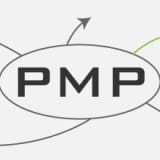Project Risk Management: Avoid vs Mitigate for PMP Exam

Already updated/will be updated for PMP Exam in 2023.
In project risk management, there are several risk management strategies as recommended in the PMBOK® Guide for positive or negative risks:
- For negative risks:
- Mitigate
- Avoid
- Transfer
- Accept
- Escalate
- For positive risks (i.e. opportunities):
- Enhance
- Exploit
- Share
- Accept
Out of the five risk management strategies for negative risks, “avoid” and “mitigate” are always not thoroughly understood and may be easily confused. Both “avoid” and “mitigate” aims at preventing the risks from occurring, yet there is one crucial different between these two risk management strategies. This post will expound on the similarities and differences of Avoid vs Mitigate and what Aspirants would need to know for the exam.
Article Highlights
PMP Definitions: Avoid vs Mitigate for PMP Exam
- Avoid: taking any possible measures/actions (e.g. changing the project plan or approach) to completely prevent the risks from occurring/eliminate the adverse effects once they occur
- not many risks may be avoided (not realistic for most cases)
- avoid usually involves a lot of costs
- Mitigate: taking measures/actions (e.g. changing the project plan or approach) to reduce the likelihood of the risks from occurring/minimize the impact once they occur
- some residual risks may remain
In addition, there are three more negative risk management strategies as outlined in the PMBOK® Guide:
- Transfer: the negative impacts related to the occurrence of the risk are shifted to a 3rd party
- the 3rd party will absorb all the losses
- may be arranged in the form of insurance policy or penalty clause
- usually involve contractual arrangements and considerations
- Accept: the negative risks are to be accepted passively
- no active actions / measures are carried out to reduce the likelihood of occurrence / degree of negative impact which might be caused by the occurrence of the risk
- workarounds may be carried out as a response once the risks occur
- Escalate: escalate the project risk to the appropriate party to handle it
- no longer a responsibility of the project manager
- can be deleted from the risk register or leave it there with a remark
Avoid vs Mitigate for PMP Exam Illustrated
Let’s take the project of PMP Exam study and preparation again for the illustration of the meanings of Avoid vs Mitigate risk management strategies.
One of the most common problem any PMP Aspirant may face is to be late for the PMP Exam owing to traffic jam (which you may just be denied the exam or have the exam time cut). There are a number of suggestions for this risk as proposed by other Aspirants. We will look into the risk response strategies for the “Avoid” and “Mitigate” categories:
- Avoid Risk Management Strategy
- Do not take the PMP Exam at all (avoid the Exam)
- Walk to the PMP Exam Centre instead of riding a car/bus/train (avoid any traffic)
- Sleep at the door of the PMP Exam centre the night before
- Mitigate Risk Management Strategy
- Go to the Exam centre at least 1 hours earlier than the Exam time in preparation of any traffic jam
- Live in a hotel adjacent to the Exam centre to minimize the traffic time
- Book an Exam centre in an area with little traffic jams
- Book the PMP Exam in the afternoon away from the morning peak hours
The “Do not take the PMP Exam at all (avoid the Exam)” is certainly not a choice for most Aspirants. For the other strategies, additional costs from the risk budget may need to be spent. Some, e.g. booking a hotel room, is more expensive than the others.
PMP Mock Exam Question
- David, the project manager, is currently in the “plan risk response” process. For the risk of summer typhoon which may adversely affect the building schedule of the factory, David plans to reschedule the beginning of construction in early winter. Which risk response is David adopting?
- Avoid
- Mitigate
- Accept
- Enhance
Solution: A
David makes use of the “Avoid” strategy to shift the construction time to early winter as typhoons normally come in summer and early autumn. There is no way to reduce the likelihood of the occurrence of typhoons so “Mitigate” is not the answer.
Conclusion: Avoid vs Mitigate for PMP Exam
To distinguish between Avoid vs Mitigate, remember that:
- Avoid: to completely eliminate the likelihood / impact of the risks
- Mitigate: to reduce the impacts / the likelihood of occurrence of the risks
Hope this article can illustrate the differences between Avoid vs Mitigate for Aspirants well.
 Additional FREE PMP resources: 47+ Commonly Confused Term Pairs with detailed explanations. If you found this article useful, you may wish to reference other Commonly Confused Term articles.
Additional FREE PMP resources: 47+ Commonly Confused Term Pairs with detailed explanations. If you found this article useful, you may wish to reference other Commonly Confused Term articles.Most Popular PMP Certification Exam Articles
- My Exam Prep Tips and Free Resources (I got 4P and 1 MP)
- How to Get 35 Contact Hours Fast and Easy?
- Detailed Comparision of online PMP Courses
- Over 1000+ FREE Quality Mock Exam / Practice Questions
- A FREE Guide to Formulas and Calculation (with explanation and sample questions)
- 47 Commonly Confused Terms with detailed explanation




 Hi, my name is Edward Chung, PMP, PMI-ACP®, ITIL® Foundation. Like most of us, I am a working professional pursuing career advancements through Certifications. As I am having a full-time job and a family with 3 kids, I need to pursue professional certifications in the most effective way (i.e. with the least amount of time). I share my exam tips here in the hope of helping fellow Certification aspirants!
Hi, my name is Edward Chung, PMP, PMI-ACP®, ITIL® Foundation. Like most of us, I am a working professional pursuing career advancements through Certifications. As I am having a full-time job and a family with 3 kids, I need to pursue professional certifications in the most effective way (i.e. with the least amount of time). I share my exam tips here in the hope of helping fellow Certification aspirants!






In Escalate – this sentence is wrong – “can be deleted from the risk register or leave it there with a remark”.
A risk never be deleted from risk register. It can be marked as appropriately, but never be deleted from risk register.
Thanks for adding your insights!
Thanks for the article. No reserves are mentioned here, which are directly related to risk management. What about Active acceptance (with contingency reserves), passive acceptance (with management reserves)?
Very nice article. Cleared my doubts.
This question illustrates my frustration with the PMP exam questions. By moving the project to the winter you have not completely eliminated the risk. What law says that a typhoon cannot come during the winter? By moving it you have reduced the probability of the risk, not eliminated it. Thus mitigation.
Yes, you are absolutely right. Exam questions are indeed exam questions (and not real life events). That’s why one of the most important advice for the exam is: don’t think too much. Sad but true.
Wish you PMP success anyway!
Hi, addition to the four points you listed as Strategies for meeting Opportunities (Positive Risks), there is one more Strategy as per PMBOK6, “Escalate”
for phrase: ‘Avoid: to complete eliminate the likelihood / impact of the risks’ consider changing from complete to completely
My bad, thanks for your input!
This sentence for Avoid is confusing – Avoid: taking any possible measures/actions (e.g. changing the project plan or approach) to completely prevent the risks from occurring/eliminate the adverse effects once they occur.
Correction – “Not” taking any possible measures/actions (e.g. changing the project plan or approach) to completely prevent the risks from occurring/eliminate the adverse effects once they occur?
Basically you want to postpone the risk and move on..
Thanks for your comments. I learn something from it!